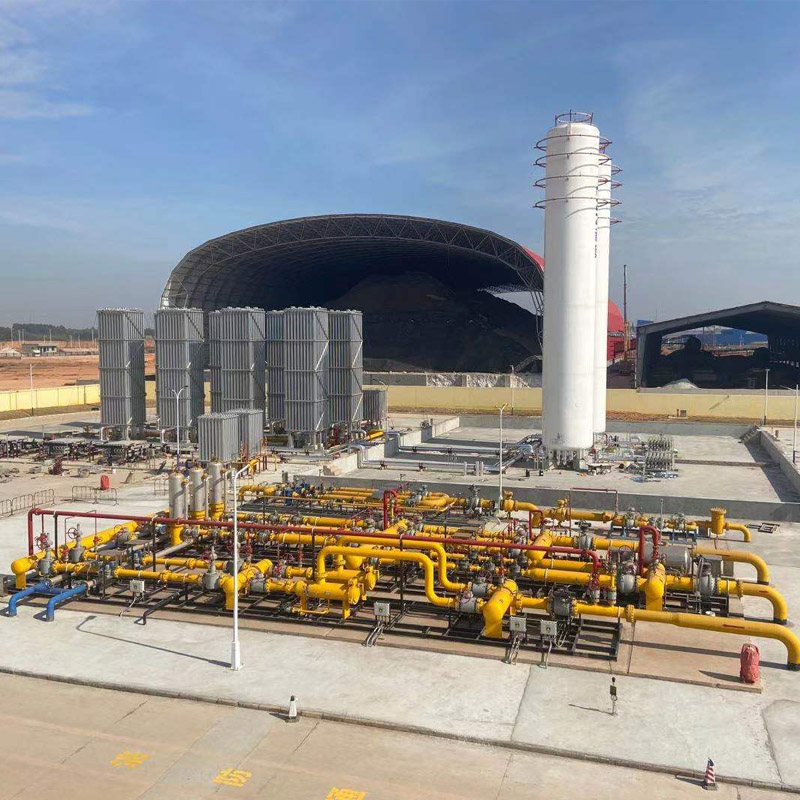
Nov . 14, 2024 15:48
Back to list
electric regulating valve
The Importance of Electric Regulating Valves in Modern Automation
Electric regulating valves are pivotal components in various industrial applications, including water treatment, oil and gas, chemical processing, and HVAC systems. Their role is crucial in ensuring that fluid flows are maintained at desired levels, enhancing system efficiency, reducing energy consumption, and preventing potential damage caused by improper flow rates. The integration of electric regulating valves into automated systems represents a significant advancement in industrial operations.
Working Principle
Electric regulating valves operate on the principle of modulating flow by adjusting the valve position in response to signals from a control system. The actuator, powered by electricity, translates the control signals into mechanical movement, allowing the valve to open, close, or partially open as required. This modulation can be based on various parameters, including pressure, temperature, and flow rate, making the system versatile and adaptable to changing operational conditions.
The design of these valves varies, including globe, ball, and butterfly valves, each serving different operational requirements. The choice of valve type depends on the specific needs of the application, such as the nature of the fluid, required flow characteristics, and pressure range.
Applications
Electric regulating valves find their applications across numerous sectors. In HVAC systems, they help maintain desired temperatures by controlling the flow of heated or cooled air. In process industries, these valves enable precise control over chemical mixtures, improving product quality and safety. Moreover, in water treatment facilities, they regulate flow rates to ensure that treatment processes function optimally, enhancing water quality and compliance with environmental regulations.
The oil and gas industry also benefits substantially from electric regulating valves. These valves play a critical role in maintaining the safe and efficient transport of liquids and gases through pipelines, where precise flow control can prevent leaks and spills, ultimately protecting both the environment and public safety.
Benefits of Electric Regulating Valves
1. Precision Control One of the primary advantages of electric regulating valves is their ability to provide precise flow control. By continuously adjusting the valve position, they can maintain the desired set points with high accuracy. This precision is vital in processes where even minor variations can lead to significant consequences.
electric regulating valve

2. Energy Efficiency By optimizing flow rates and reducing excess consumption, electric regulating valves contribute to energy savings. These valves can adapt to real-time changes in operational conditions, further reducing waste and enhancing the overall efficiency of the system.
3. Automation Compatibility The integration of electric regulating valves into automated systems simplifies process management. With the ability to connect to advanced control systems, including SCADA (Supervisory Control and Data Acquisition), these valves facilitate remote monitoring and control, enabling operators to manage systems from afar and respond rapidly to any issues that arise.
4. Reduced Maintenance Electric actuators generally require less maintenance compared to their pneumatic counterparts. This aspect not only reduces operational costs but also minimizes downtime, contributing to a more reliable and efficient process.
5. Enhanced Safety Proper flow regulation is critical in maintaining safe operation conditions. Electric regulating valves help prevent overpressure scenarios by controlling flow, thus reducing the risk of accidents in various processes.
Future Trends
The future of electric regulating valves is intertwined with the advancements in automation and smart manufacturing. As industries increasingly adopt Industry 4.0 standards, the demand for intelligent and connected devices will grow. Electric regulating valves capable of real-time data transmission and predictive maintenance functionalities will become standard.
Moreover, the rise of environmentally sustainable practices will further propel the development of these valves. Innovations aimed at reducing the environmental impact of industrial processes will emphasize valves that minimize energy consumption and enhance resource efficiency.
Conclusion
In conclusion, electric regulating valves play a fundamental role in modern industrial automation, providing essential functions in maintaining optimal flow rates and enhancing system efficiency. Their adaptability, precision, and ease of integration into automated systems make them indispensable in various applications. As industries continue to evolve towards smarter and more sustainable operations, the significance of electric regulating valves is poised to increase even further, marking them as critical components in the future of industrial processes.
Next:
Latest news
-
Safety Valve Spring-Loaded Design Overpressure ProtectionNewsJul.25,2025
-
Precision Voltage Regulator AC5 Accuracy Grade PerformanceNewsJul.25,2025
-
Natural Gas Pressure Regulating Skid Industrial Pipeline ApplicationsNewsJul.25,2025
-
Natural Gas Filter Stainless Steel Mesh Element DesignNewsJul.25,2025
-
Gas Pressure Regulator Valve Direct-Acting Spring-Loaded DesignNewsJul.25,2025
-
Decompression Equipment Multi-Stage Heat Exchange System DesignNewsJul.25,2025

